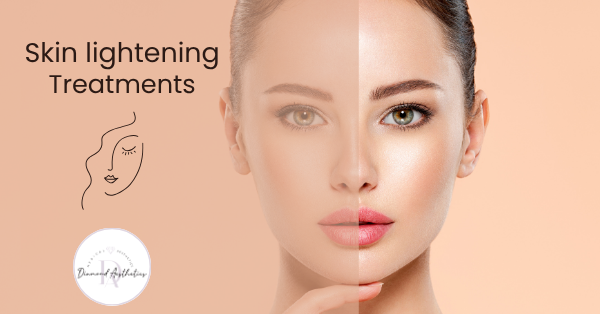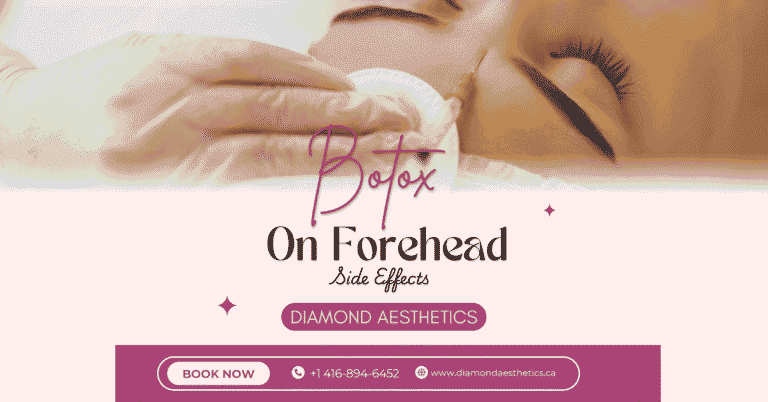Skin lightening treatment is a popular solution for addressing issues like hyperpigmentation, melasma, acne scars, and uneven complexion. Based in dermatology and clinical medicine, these treatments work by reducing excess melanin, the pigment that determines human skin color, to create a clearer, more radiant look.
Methods include topical creams with ingredients like hydroquinone, kojic acid, arbutin, and retinoids such as tretinoin and vitamin C, as well as procedures like chemical peels, laser therapy, and photorejuvenation. Safety and effectiveness depend on professional evaluation and skin type.
What Are Skin Lightening Treatments? A Dermatologist’s Perspective.
Skin lightening treatments are cosmetic or medical interventions designed to reduce excess melanin—the biological pigment responsible for human skin color-resulting in a lighter or more uniform skin tone. Excess melanin can manifest as freckles, dark spots, melasma, or post-inflammatory hyperpigmentation.
Understanding your skin condition and treatment goal is crucial, whether medically indicated for disorders like vitiligo or pursued for aesthetic enhancement.
Types of Skin Lightening Treatments
1. Topical Medications and Serums
The foundation of many treatment plans, topical creams, and serums contains active ingredients that inhibit tyrosinase, an enzyme critical to melanin production.
- Hydroquinone: The gold standard for pigment reduction; requires prescription for higher doses.
- Kojic Acid: A natural antioxidant with depigmenting effects.
- Vitamin C (Ascorbic Acid): Enhances skin radiance and neutralizes free radicals.
- Niacinamide (Vitamin B3): Promotes skin barrier repair and evens tone.
- Alpha Arbutin: Plant-derived, gentle on sensitive skin.
Consistency and correct application are key, alongside sunscreen to prevent further pigmentation.
2. Chemical Peels
By applying controlled concentrations of acids like glycolic acid or trichloroacetic acid (TCA), chemical peels accelerate exfoliation, encouraging regeneration of fresh epidermal layers. This method is effective for:
- Reducing solar lentigines (sun spots)
- Treating mild to moderate melasma
- Improving overall skin texture
Chemical peels require professional administration and post-procedure care to optimize results and minimize side effects such as redness or temporary sensitivity.
3. Laser and Photorejuvenation Therapies
Laser therapies-including Q-switched Nd: YAG, Fractional CO2, and IPL (Intense Pulsed Light), target melanin granules and stimulate collagen remodeling. These treatments address:
- Persistent pigmentation disorders
- Acne scars and rosacea
- Uneven skin tone and complexion
Proper evaluation by dermatology specialists is essential, especially for darker skin types, to prevent adverse effects like post-inflammatory hyperpigmentation.
4. Microneedling and Microdermabrasion
These minimally invasive techniques enhance collagen production and facilitate better absorption of topical agents.
- Microneedling induces controlled micro-injuries to promote skin renewal.
- Microdermabrasion mechanically exfoliates the epidermis, improving tone and texture.
Often combined with serums for maximum efficacy, these treatments suit patients with mild pigment concerns.
5. Natural and Home-Based Remedies
While popular, natural remedies such as aloe vera, turmeric, and papaya provide limited clinical benefit and carry a risk of skin irritation. It is vital to recognize their limitations, especially for significant pigmentation issues.
What Results to Expect from Skin Lightening Treatments
Skin lightening is much more than a cosmetic trend-it’s a scientifically supported approach grounded in dermatology and modern aesthetic medicine. When performed under the guidance of experienced
professionals, these treatments address a range of skin concerns while enhancing overall complexion, radiance, and skin health.
Here’s what patients can expect from effective skin lightening treatments:
1. Targeted Reduction of Pigmentation and Scars
Issues such as melasma, freckles, and acne scars stem from irregular melanin distribution. Treatments like chemical peels and laser therapy work by breaking down excess pigment and promoting healthy skin regeneration, helping to fade stubborn discolorations and marks.
2. Enhanced Skin Tone Uniformity
Uneven skin tone caused by hyperpigmentation or postinflammatory hyperpigmentation results in a patchy appearance. Skin lightening procedures aim to harmonize the human skin color, producing a smoother, more balanced complexion and improved skin texture.
3. Reversal of Sun Tanning and Environmental Damage
Prolonged exposure to ultraviolet (UV) rays often leads to sun tanning, causing melanin buildup and damaged skin layers. Professional skin lightening treatments exfoliate damaged cells and reduce accumulated pigment, restoring a healthier and brighter skin surface.
4. Boosted Skin Radiance and Texture
Advanced therapies, including laser treatments and topical retinoids or antioxidants like Vitamin C, stimulate collagen synthesis and encourage gentle exfoliation. The result is improved skin smoothness, firmness, and a rejuvenated glow.
5. Confidence Through Clearer Skin
Beyond physical improvement, clearer, more even-toned skin often enhances self-esteem and emotional well-being. When treatments are delivered following international standards and clinical protocols, patients experience safe and satisfying results.
Benefits of Skin Lightening Treatments
Skin lightening treatments provide much more than just a lighter complexion. They help improve overall skin tone, enhance texture, and boost natural radiance, resulting in a healthier and more youthful appearance. These treatments target pigmentation irregularities, reduce visible spots and scars, and promote smoother, more even skin, helping you achieve a revitalized and confident look.
- Improved skin radiance and vitality
- Reduction of visible pigmentation marks, including freckles, sun spots, and melasma
- Smoother, more even complexion and skin texture
- Softening of acne scars and blemishes
- Restoration of youthful skin appearance, reversing sun damage and environmental effects
- Enhanced confidence and psychological well-being
These benefits collectively contribute to healthier, more vibrant skin and increased self-confidence.
Safety and Risks: What to Know
Professional guidance is essential when considering skin lightening treatments. Improper use or overuse of certain products can result in serious side effects, such as ochronosis- a bluish-black discoloration caused by prolonged hydroquinone use-skin thinning from steroid misuse, mercury poisoning linked to unregulated products, and potential burns or scarring from laser treatments. Understanding these risks helps ensure safe and effective care.
- Ochronosis (bluish-black skin discoloration) from prolonged hydroquinone use
- Steroid-induced skin thinning
- Mercury poisoning from unregulated products
- Laser-related burns or scarring
Always choose treatments backed by clinical trials and consult board-certified dermatologists.
Frequently Asked Questions (FAQs)
Does laser treatment lighten skin effectively?
Yes, when performed by trained specialists, laser treatments break down excess melanin, improving skin tone and texture.
Are skin lightening treatments permanent?
Results vary; maintenance treatments and diligent sun protection are necessary to sustain improvements.
What is the best skin lightening treatment?
This depends on skin type and condition; a dermatologist can recommend a tailored combination of topical and procedural therapies.
Are natural remedies effective?
Natural products may support skin health, but are usually insufficient for significant pigmentation disorders.
Why Skin Lightening Requires Expert Oversight
Despite being a popular aesthetic choice, skin lightening intersects deeply with medical specialties such as dermatology and clinical medicine. Incorrect use of lightening agents or unsupervised treatments can lead to complications, especially in conditions like acne, rosacea, or chemical burns.
Proper patient evaluation, personalized treatment plans, and ongoing professional care are essential to maximize efficacy and minimize risks. This approach ensures your skin’s health is prioritized while achieving your desired cosmetic outcomes.
Final Thoughts: Prioritize Skin Health and Confidence
Skin lightening treatments can deliver transformative results when used responsibly. Prioritizing skincare, sun protection, and a personalized approach ensures both safety and lasting effectiveness.
At the core of these treatments is the goal of achieving healthy, radiant skin that enhances your natural beauty and boosts your confidence. With expert guidance and science-backed methods, your skincare journey becomes a meaningful expression of wellness and self-respect.
If you’re interested in learning more or exploring which skin lightening treatment is best suited to your needs, feel free to reach out to Diamond Aesthetics. Your skin’s health and beauty are always our priority.




